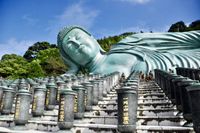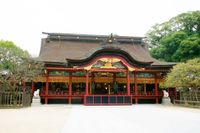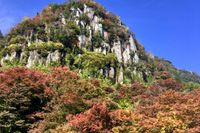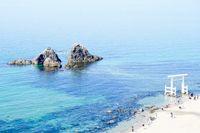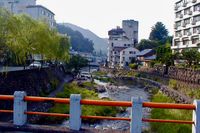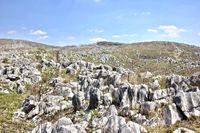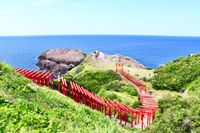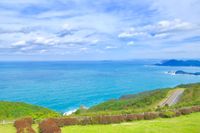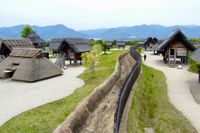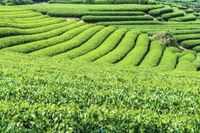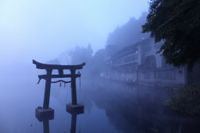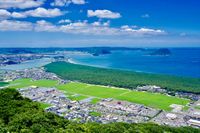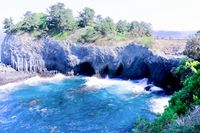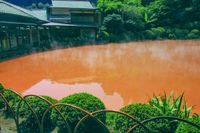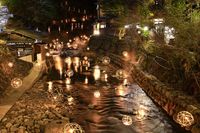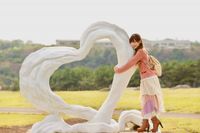Mount Sarakura
福岡県/北九州市八幡東区

Description
This is a 622 meter high mountain situated in Norther Kyushu. The view of Kyushu below from the top of the mountain is known as the "10 billion dollar view". There are endless destination for visitors, including the rock climbing practice area, Kunimi rocks, the stunning cedar trees known as "Empress cedar" as well as camping facilities.
Homepage
Address
Nearby Car Night Spots
There is no nearby car night spots
Nearby Activities
Ranking Stations
Shin Meishin Suzuka PA (inbound) RV Station Suzuka * With Power!
¥2,200〜
/ per nightMie Yamamotocho, Suzuka-shi
4.3
(160)Vanlife BASE | 45 min. from Narita Airport / Perfect for campervan travel/A seaside town rich in nature/Japanese countryside town/welcome traveler
¥7,000〜
/ per nightChiba Koseki, Kujukuri-machi, Sambu-gun
5.0
(64)Nearby Drive Spots
Nanzoin Temple
This is a Shingon sect main head temple built in 1899, as a temple from Mount Koya. Nanzoin temple had provided Burmese and Nepalese children with medical aid, milk and stationery over the years, and as a return gift, the Myanmar national buddhist institution gifted various buddhist relics, known as Sarira. In 1995, a 41 meter reclining buddha statue was built to enshrine these buddhist relics. Other areas to look out for which are relics of its history are the buddha footprint, 500 arhats and the Seven Deities of Good Fortune tunnels.
Dazaifu Tenmangu Shrine
This is a temple built in 919 AD by Fujiwara Nakahira. The great heavenly God Sugawara Michizane is enshrined in this temple, and there is splendid Shinto architecture above the grave of this God. It is a popular site of reverence for students, as this temple God is known as the deity for learning and study, and along with the Kitano Tenmangu Shrine in Kyoto, this is the main head temple of the Tenmangu shrine group, which consists of around 12,000 shrines. The area is famous for Tobi Ume plums, and each year, a priestess will donate a plum tree to the country, and is also used for plum wine.
Yabakei Gorge
This is a valley in the northern part of Oita Prefecture, one of the three most famous in Japan. It is an extremely old value which has stellar views of the rock formations made by the volcanic activity from around 2.6 million years ago and has views of numerous unusual rock formations. There are countless spectacular scenes along the way, and they are collectively referred to as the sixty-six landscapes of the Yabakei Gorge.
Tsunoshima Bridge
This is a 1780 meter long bridge in Yamaguchi prefecture, Shimonoseki City, which stretches across to an island. It has been often used as a filming location for movies and adverts due to its ideal location, and attracts many visitors due to its stunning views. It is recommended to see the southern and front observation decks for the best views.
Couple Rock(Sakurai Futamigaura)
This is a collection of sacred rocks in Futamigaura, the western part of Fukuoka prefecture. The rocks are sacred forms from the Sakurai Shrine, and each "Male" rock is from Izanagi (a legendary male God) and the "female" rocks are from Izanami (a legendary female God). The views of the sunset that peeks between the rocks is a sight to behold, and cherished by many visitors that come here.
Nagato Yumoto Onsen
An Onsen in Nagato city, it boasts 600 years of history, and was the most popular Onsen in some circles during the Edo era(1603-1868). The onsen is situated along the Otozure River, where one can also discover large ryokan (traditional Japanese lodgings), communal baths, foot baths and a park.
Akiyoshidai
It is Japan's largest limestone plateau in the central part of Yamaguchi Prefecture. Coral reefs formed at the top of the under sea volcano eruption about 350 million years ago, which forms the base of the plateau. There are more than 400 limestone caves such as Akiyoshi Cave, Taisho Cave, Kagekiyo Cave, Nakao Cave amongst others, and its popularity is growing.
Motonosumi Inari Shrine
A shrine built in 1955, it is home to the Gods known as Ukanomitama no KamiIzanami no Mikoto and is worshipped and revered by those in the local regions. The nearby cliff area that faces the Japan sea has waves crashing against it, which are known as the spouting water of the dragon haven, which relates to a Japanese traditional fairy tale legend. There is a row of 123 Torii gates facing the lake which spans over 100 meters, which is a sight to behold.
Senjojiki
This is a large grassland area in Yamaguchi prefecture, Nagato City. The area spans 26400 square meters and is situated at an altitude of 333 meters. The Japan sea can be viewed at the norther side, with views towards the surrounding islands, and is popular as an area to relax and refresh with the sun and breeze. There are several windmills built here due to the area often having strong winds.
Yoshinogari Historical Park
This is the largest ruins area from the Yayoi era (around 500 BC). The biggest characteristic is the collection of relics associated with the defense of the settlement, with about 2.5 km of outer bunkers and fences. In addition, as from excavation survey findings, pit dwellings, tall floor warehouses, observation towers, tombs, bronze ware, copper mirrors and the like have been discovered over an area of 36 hectares, making it a very important historical site which tells the story of the lives of people in ancient times.
Yame Chuo Tea Garden
This is a tea field situated in Yame city. It is the 6th largest tea producer in Japan, and makes up 3% of Japan's tea. Tea leaves have been grown here since the Sengoku era(1467-1600), and has spread in prominence and popularity since them.
Rurikoji Temple
This is a Soto sect temple built by Sue Hirofusa in 1471. The object of worship at this temple is known as Yakushi Nyorai, and was built to display the internal culture of Ouchi clan. It is a famous tourist location representing Yamaguchi. The temple's park area, known as Kozan Park has a 5 storied pagoda at its heart, classified as a national treasure, and is famous for its cherry and plum blossom views when in season. The pagoda tower also has illumination displays in the evening, allowing visitors to enjoy the area in all seasons.
Nabegataki Falls
This is a hot spring in Unzen city, built in 701 AD. From the Edo era(1603-1868) up until the Meiji era(1868-1912), it developed as a resort area for many foreigners who visited Nagasaki, with Sea Bolt being one of the first. The 30 Onsen have the smell of the naturally occurring sulphur and smoke, known as the "Unzen hell". It also has a sad history of being witness to Christian martyrdom.
Mount Yufu
This is a 1583m high active volcano in Yufu city. Due to its resemblance to Mount Fuji, it is sometimes called the "Bungo Fuji". It has been historically known as a site of worship and object of reverence, and also appears as a holy mountain in the "Kojiki" anthology. It is ideal for those who don't wish to climb the mountain as well as the railway is also popular with train enthusiasts, with the route having amazing scenery of Mount Yufu in its backdrop.
Yufuin Onsen
This is an Onsen close to Kinrin Pond, which is at the foot of Mount Yufu. The volume of hot spring water is the second largest in Japan. It has the distinct characteristic of having numerous luxury traditional Japanese lodgings which are integrated into the natural surroundings with the minimum of disturbance. The central Yufu street in this area has many fashionable miscellaneous goods shops, and restaurants, making it popular with visitors young and old.
Niji no Matsubara
This is a pine grove in Karatsu bayside, Saga prefecture. With a width of 500 meters and a length of 4.5 km, there are around 1 million pine trees that line the forest, and is a rare sight due to their proximity to a coastal area. During the Edo era(1603-1868), it is believed that these pine trees were purposely planted here to act as a barrier to the coastal winds.
Nanatsugama Caves
This is a row of sea caves that exist side by side along the coast of the northern part of Saga Prefecture. Because it originally had seven sea caves, it was named "Nanatsugama", although in the present day, there are more than seven caves. It is an unexplored area where you can see the mysterious scenery that nature has created.
Beppu Onsen
This is a hot spring bath in Beppu City. It has 1300 years of history, and boasts the highest volume of natural hot spring water in Japan. It was built around the 8 Onsen towns known as the "8 baths", and due to the sulphuric smells, it has a famous "Beppu hell tour" with the "water hell", "blood pond hell", "white pond hell" and "tornado hell". There are also plenty of sand baths and bedrock baths.
Kurokawa Onsen
This is an onsen in the northern part of Mount Aso. It is one of the most well recognized Onsen areas, with 2 stars from the Michelin tourism guide. It was built with the concept of the town roads being a "corridor" with each guest inn as a "room", and was built whilst maintaining integration with the natural surroundings. It is popular for those visiting several different Onsen.
Cape Hado
This is a cape in the Eastern Matsuura peninsula in the Northern part of Saga prefecture. As the pronunciation of the place name is similar to "haato" (Heart in Japanese), it is also known as a sacred spot for couples, and there is a heart shaped monument to represent this. There are also plentiful facilities for water activities, lodgings and camping, a seaside sand park and a Tsuboyaki area (Tsuboyaki is a method of putting ingredients inside a container and then cooking them while in the container).







